Citizen science – wildlife monitoring
Council needs your help as citizen scientists to track populations of fauna in the Inner West such as birds, microbats, and long-nosed bandicoots.
Natural Areas Spring BioBlitz 2025
Inner West Council's Urban Ecology Team have started a citizen science project using iNaturalist and we are inviting all keen ecology enthusiasts to get involved by collecting data on plants, fungi, insects, and animals! We’re specifically interested in recording species within our Natural Areas, managed areas of urban bushland that form key biodiversity corridors within the Inner West. You can view a list of our Natural Areas here.
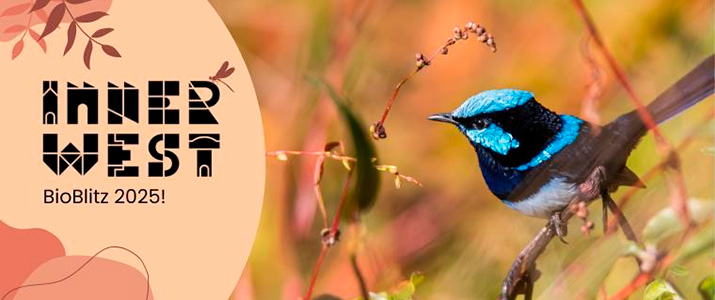
All data will be accessible on a public database, and you will be able to search by area within the Inner West LGA to research the species that live in your neighbourhood.
iNaturalist is a great tool that can help get you started on bug, plant, fungi or animal identification without the need for an expensive field guide or professional guidance. It’s accurate and free and offers an easy way to start learning more about the natural world around us.
Click here to join the project – you will need to create an iNaturalist account or you can look up Inner West Spring BioBlitz 2025 under the projects tab on the app.
Need help creating an iNaturalist account? Follow the following link for more information:
Getting Started with iNaturalist
Birds in backyards

Photo: David Noble, Eastern Spinebill
More than 140 species of birds have been recorded in the Inner West. Threatened species, such as Powerful Owl, and migrants, including the Channel-billed Cuckoo, also spend time in the Inner West. A number of species not usually seen in the Inner West were seen here in the summer of 2019/2020 due to drought and bushfires in other parts of the state.
Birds in Backyards is a citizen science program developed by Birdlife Australia that focuses on the birds that live where people live. Connect with the birds in your backyard, local park, school or favourite place by participating in Birds in Backyards. The data provides an insight into how Aussie birds are doing in the Inner West.
It's Winter survey time right now. Check out the webpage for more details.
Just one 20-minute survey each quarter provides vital information. Getting started is easy:
- Register for a Birdata account
- Familiarise yourself with the instructions or watch the video
- Log on to Birdata on the app or website and submit your Birds in Backyards survey.
Listen to the Birds of the Inner West podcast to learn more about our local birds.
Tempe Birdos
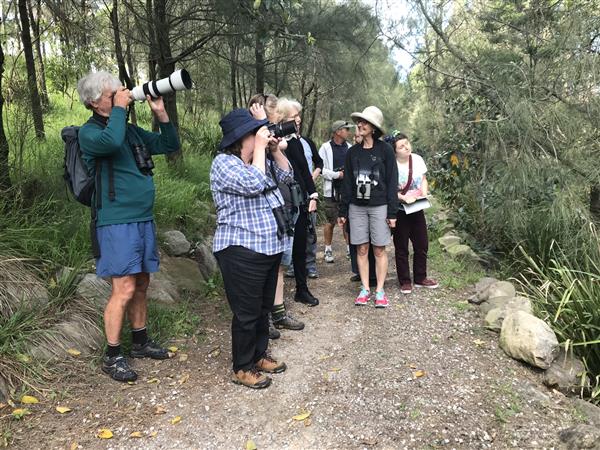
Photo: Virginia Niven.
Tempe Birdos are a community group that conduct surveys every month at Tempe Wetlands and Reserve, an Inner West priority biodiversity area. Tempe Birdos have recorded 120+ bird species since monthly surveys began in September 2011.
Join in to learn more about your local birds and contribute to an important citizen science project that provides information on bird diversity and population trends over time.
Meet on the second Saturday of the month, 7:30am at Tempe Lands, Water Basin 1, near South St and Station Street, Tempe. BYO mug and stay for morning tea afterwards!
Make an inquiry about volunteering with Tempe Birdos
You can also contact the group and check out the latest sightings by visiting the Tempe Birdos Facebook page.
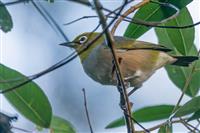
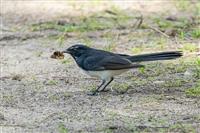
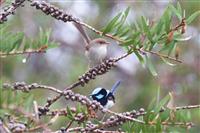
Photos: David Noble, Silvereye (left),Willie Wagtail (centre) and Mark Malone, Superb Fairy-wren (right)
GreenWay Birdos
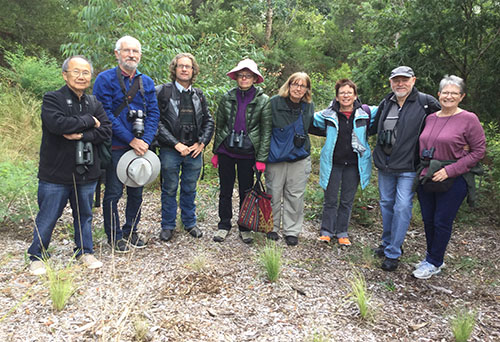
Photo: Courtesy of Inner West Environment Group / Greenway birdos
GreenWay Birdos are a community group that meet fortnightly along the GreenWay alternating between Dulwich Hill and Hawthorne Canal. They conduct surveys of birds in the local area and including bushcare sites. Their survey data is made publicly accessible in the Atlas of Living Australia and is used to help protect biodiversity in the Inner West. Download the Birds of the GreenWay photo guide to learn how to recognise birds in your area!
Dulwich Hill Chapter
Meet at Waratah Mills Light rail outbound platform at 7:30am, fourth Saturday of the month. The route travels along Western street, Fred Street and Victoria Street back to the station. Catch us up if you're running a bit late. Finish around 9am
Hawthorne Canal Chapter
Meet at Taverners Hill Light rail station outbound platform at 7:30am, second Wednesday of the month. The route travels along the Canal to Richard Murden Reserve, to Loftus Street bushcare site and finishes at the Leichhardt North Light Rail.
To get involved or for more information about GreenWay Birdos, contact joathome@bigpond.net.au or just turn up!
Everyone is welcome! Binoculars available. Stay for a coffee afterwards.
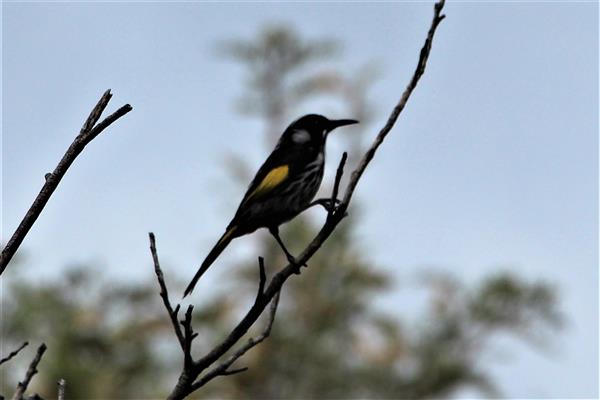
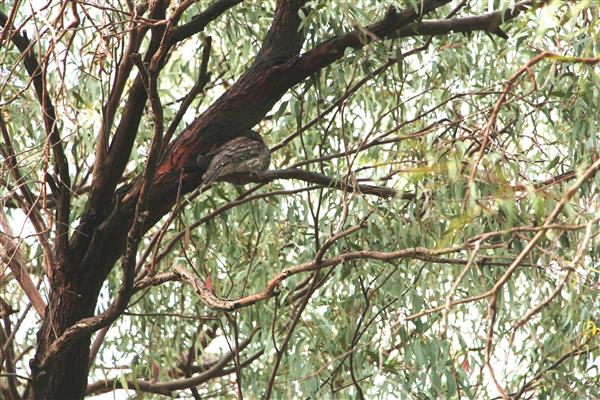
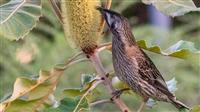
Photos: Courtesy of Inner West Environment Group, New Holland Honeyeater (left), Tawny Frogmouth (middle), Wattlebird (right).
Can you spot the Tawny Frogmouth in the second picture?
FrogID

Photo:Australian Museum
In 2020, four frog species were recorded in the Inner West as part of the Australian Museum’s FrogID project. These included the Eastern Dwarf Tree Frog, Peron's Tree Frog, Striped Marsh Frog and Common Eastern Froglet. Frogs are indicators of environmental health and monitoring them could alert us to water quality issues or habitat loss.
You can find out which frogs live in your backyard or local wetland with the FrogID app and by listening to the Frogs of the Inner West Podcast.
Download the FrogID App for iOs or Android and start finding frogs in your local area.
Microbat monitors
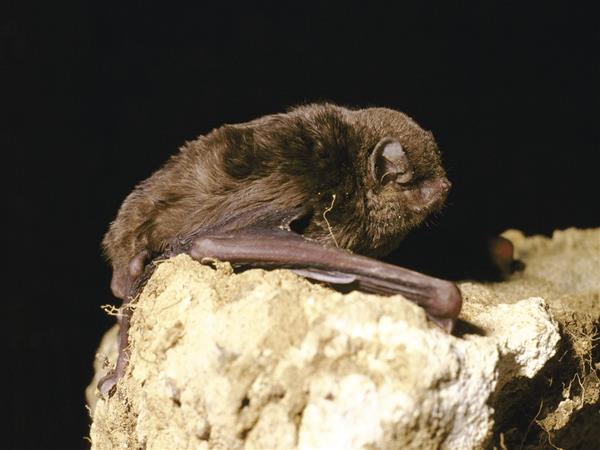
Photo: Ken Stepnell/NSW DPIE, Large Bent-wing Bat (Miniopterus orianae oceanensis)
Did you know that the Inner West is home to tiny flying mammals? They keep to themselves - you won’t hear them and you probably won’t see them. But they are active after dark, eating vast numbers of insects and keeping our pests under control.
- Seven species of microbats have been recorded by Council in the Inner West including Large Bent-wing Bat (Miniopterus orianae oceanensis), Fishing Bat (Myotis macropus) and Gould’s Wattled Bat (Chalinolobus gouldii)
- Microbats are much smaller than their larger relatives, the Grey-headed Flying Fox, which most people are familiar with
- Large Bent-wing Bat, Little Bent-wing Bat, Fishing Bat and Grey-headed Flying Fox are threatened species.
How to protect microbats:
- They need a safe place to live – such as caves, storm water pipes, tree hollows, under bark, cracks in posts or dried palm leaves. They are fussy and require just the right conditions. You can help by:
- minimising lighting outdoor areas and your backyard at night.
- conserving trees with hollows on your property
- using wildlife-friendly fruit netting and fencing (no barbed wire)
- If you find an injured bat, contact WIRES by phoning 1300 094 737 or Sydney Wildlife by phoning 9413 4300
- Never touch bats. Flying-foxes and microbats can carry a virus that is harmful to humans. Although very few are believed to carry the virus, do not take any risks.
How to get involved:
- The Inner West Microbat Monitors is a supervised citizen science group that meets periodically for sunset surveys to collect data using high frequency recorders
Make an inquiry about Microbat Monitors
2021 dates to be confirmed.
Bandicoots in backyards
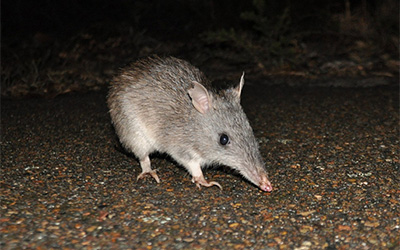
Photo: M. Jekabsons
Native Long-nosed Bandicoots (Perameles nasuta) were discovered in the suburbs of Dulwich Hill, Lewisham and Petersham over ten years ago but the Inner West population is now endangered. These small marsupials survive by living under people's homes and in backyards and help control grubs and pests in the garden.
We need your help to record where they're found!
Signs to look for
- A mammal the size of a small rabbit with a long nose and short tail
- Distinct hopping movements not scurrying movements like rats and mice
- Small conical holes (the size of a fifty-cent coin) made by bandicoots when they dig for food
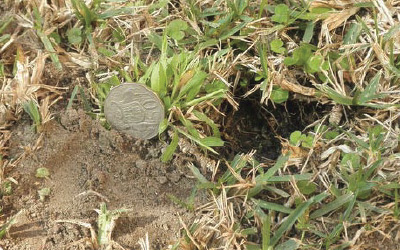
Photo: A. Ward
How to protect bandicoots
- Keep cats and dogs indoors from dawn to dusk
- Avoid using insecticides and poison baits in your garden
- Make your backyard bandicoot-friendly: visit the Backyard Buddies website to find out how
- If you find an injured bandicoot, contact WIRES by phoning 1300 094 737 or Sydney Wildlife by phoning 9413 4300
How to report sightings
Native Wildlife Rescue
Native animals are part of our urban landscape and are exposed to accidents, injuries and sickness. These animals require specialist handling and MUST be assessed and rescued by trained wildlife rescuers. There are some options for Inner West residents, if you are unsure contact your local vet or one of the organisations below.
- NSW Wildlife Information, Rescue and Education Service (WIRES). A not-for-profit charity providing native animal rescue services through a network of volunteers. WIRES is the largest wildlife rescue organisation in Australia, and is licensed by the NSW National Parks and Wildlife Service. Their webpage includes information on current issues and contact details for their wildlife rescue call centre.
- Sydney Wildlife. A not–for–profit charity licensed by NSW National Parks and Wildlife Service. They rehabilitate and release sick, injured and orphaned native animals and educate the community, at all levels, about the need to protect our native animals and to preserve their habitats.